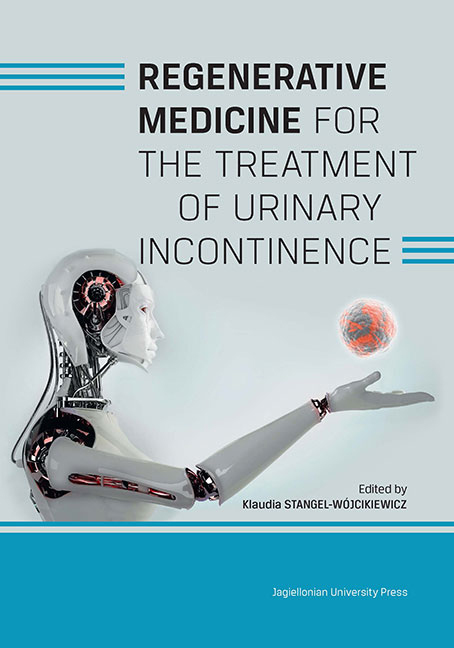Book contents
- Frontmatter
- Contents
- Preface
- Introduction
- Chapter 1 Urinary incontinence in women - outline of the problem
- Chapter 2 Anatomy of the urogenital system
- Chapter 3 Clinical types of urinary incontinence
- Chapter 4 Treatment of stress urinary incontinence
- Chapter 5 Regenerative medicine for the treatment of urinary incontinence
- Chapter 6 Virtual Patient system - simulations of clinical encounters for medical education. Case study of a woman with urinary incontinence
- Chapter 7 Development of a robotic tool aiding a new stem cell-based treatment for stress urinary incontinence in women
- Chapter 8 Difficulties and limitations of cell-based therapy for the treatment of urinary incontinence
- Summary
- List of authors
Summary
Published online by Cambridge University Press: 03 January 2018
- Frontmatter
- Contents
- Preface
- Introduction
- Chapter 1 Urinary incontinence in women - outline of the problem
- Chapter 2 Anatomy of the urogenital system
- Chapter 3 Clinical types of urinary incontinence
- Chapter 4 Treatment of stress urinary incontinence
- Chapter 5 Regenerative medicine for the treatment of urinary incontinence
- Chapter 6 Virtual Patient system - simulations of clinical encounters for medical education. Case study of a woman with urinary incontinence
- Chapter 7 Development of a robotic tool aiding a new stem cell-based treatment for stress urinary incontinence in women
- Chapter 8 Difficulties and limitations of cell-based therapy for the treatment of urinary incontinence
- Summary
- List of authors
Summary
Stem cell therapy is no longer a futuristic dream. Reports from different research centres investigating this new therapeutic procedure have clearly indicated its effectiveness and safety. Multicentre clinical trials carried out in Canada and the USA are expected to provide objective information on the advantages and shortcomings of MDCs for the treatment of SUI, and data from follow-up after the first injection will show the long-term effects of this therapy.
Because patients are injected with autologous cells the histocompatibility barrier does not exist and there is no risk of transplant rejection. This therapeutic procedure also eliminates the need for hospitalisation, which significantly reduces the cost of treatment and makes it more available to patients with UI. The use of autologous muscle-derived cells also eliminates potential ethical concerns about harvesting material from patients. Thus, are there any limitations of this treatment? Will this therapy used in men and children provide similar promising effects as in women? Is it possible to make a leap and regenerate the urethral sphincter and pelvic floor structures in vitro? Studies on in vitro vaginal tissue culture and its use in patients with vaginal agenesis are already in progress. Only scientists, with their minds and creativity, can decide what other challenges may be accepted in the field of regenerative medicine to treat human health problems.
- Type
- Chapter
- Information
- Publisher: Jagiellonian University PressPrint publication year: 2016

